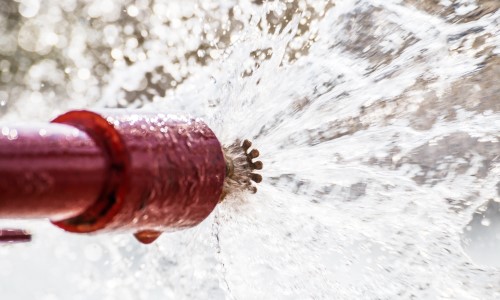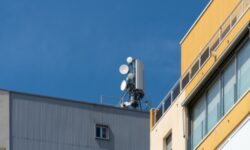ISO Technical Committee Explores Electrically Operated Sprinklers
An ISO committee recently requested provision for use of electrically operated sprinklers as part of fire suppression systems.

I am writing this month’s article from Saint-Petersburg, Russia. The reason that I am here is to attend the 41st meeting of the International Standards Organization (ISO) Technical Committee 021, “Equipment for Fire Protection and Fire Fighting.”
I am a member of Sub-Committee (SC) 03, Fire Detection and Alarm Systems. The ISO Standards are used worldwide, and as such, the meetings that were held this week had delegates from a number of countries.
In addition to SC-03, there are a number of other sub-committees that make up TC-021. One of these is SC-05, “Fixed Firefighting Systems Using Water.” This committee covers fire sprinkler systems. The United States is represented on both SC-03 and SC-05.
A number of the standards that are being worked on throughout the makeup of TC-021 are for cutting-edge technology. One such technology was covered this week by both SC-03 and SC-05.
In a Fire Side Chat column I wrote in 2018 that discussed some of the new fire detection equipment being shown at the NFPA Annual Meeting, I had several paragraphs on an electrically operated sprinkler that would be connected to a fire detection system for actuation.
During the ISO TC-021 meeting, there was a request that the fire detection standard have a provision for the use of these sprinklers that would be part of a fire suppression system. The question was on compatibility.
There are several manufacturers that now produce these sprinklers. The basic concept for their use is that through programming of the fire detection system a number of sprinklers in the area of the detection of a fire could be actuated, thus allowing for the fast containment and suppression of a fire.
This does speed up the release of water into the area of the fire as sprinklers are in the vicinity of the heat source, and thus the fire could be actuated prior to the heat from the fire reaching the sprinkler for fusing.
In the U.S., Johnson Controls (JCI) through its Tyco brand has the EAS-1, “Electronically Activated Sprinkler System.” This system is comprised of the sprinkler, a heat detector and a device that is placed against the fusing bulb of the sprinkler.
The heat detector is a fixed temperature addressable heat detector. The detector is connected back to the releasing fire alarm control unit. Upon activation of a single heat detector, the sprinkler associated with that heat detector, as well as other nearby sprinklers, are actuated.
Which sprinklers are actuated is based upon the programming of the system.The heat detector must be within 3 feet of each sprinkler that is to be part of the system.
The sprinkler is actuated through the firing of a squib, which caused a metal rod to smash the temperature fusing glass bulb that is part of the sprinkler. A squib is a small explosive device that fires when an electrical current is sent to it. Squibs are used as part of fire suppression releasing systems, such as clean agent and Aqueous Film Forming Foam (AFFF) systems. They have a very fast actuation time.
At this time, the EAS-1 system is only listed for use within storage occupancies. A similar product is produced by GW Sprinkler A/S, from Demark. The product from this firm is an attachment that is installed on a number of its sprinklers, including pendent, upright and sidewall.
The operational concept is similar to the JCI product, in which through the activation of a heat detector, an electrical current to a squib will be sent from the fire alarm control unit to either a single sprinkler or a number of sprinklers within the area of the first detection of heat for the rapid containment of a fire.
A third company that is based in Russia, GEFEST Enterprise Group, has a product that does not use a squib, but instead has a heating element that is located in the base of a glass bulb sprinkler.
When a detection device that is associated with the sprinkler is actuated, the heating element located at the base of the glass bulb is energized. With the rise of temperature within the bulb, the liquid expands, the bulb breaks and water is released.
Within the Russian fire codes, the detectors associated with a sprinkler are referred to as satellite detectors. This system uses two different satellite detectors, heat and flame devices.
The heat detector is located near the sprinkler while the flame sensor is for coverage of the room or space within it. These detectors can be cross-zoned. Over time, the use of these systems will increase the incidence of the fire detection and suppression system being fully integrated.
Eventually, other manufacturers will bring additional products and methods to market. This is a technology of which you should be aware.
If you enjoyed this article and want to receive more valuable industry content like this, click here to sign up for our FREE digital newsletters!

Security Is Our Business, Too
For professionals who recommend, buy and install all types of electronic security equipment, a free subscription to Commercial Integrator + Security Sales & Integration is like having a consultant on call. You’ll find an ideal balance of technology and business coverage, with installation tips and techniques for products and updates on how to add to your bottom line.
A FREE subscription to the top resource for security and integration industry will prove to be invaluable.








